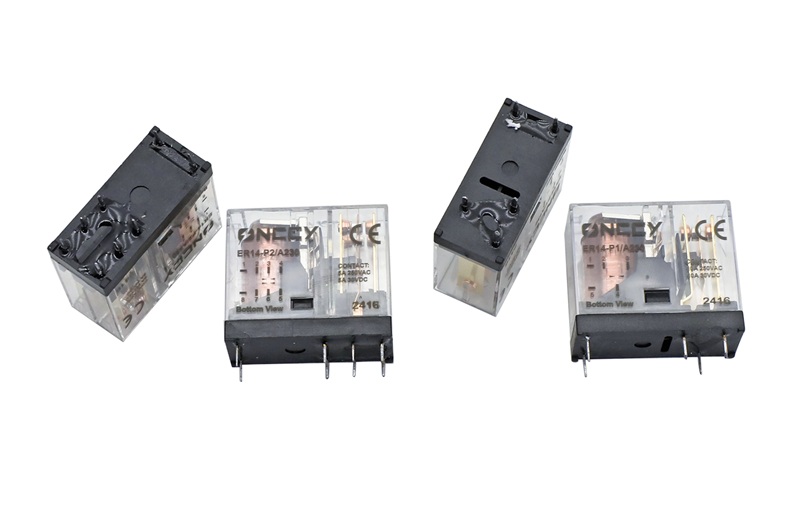Introduction: Why Relay Design Matters
Power relays are essential components in modern electrical systems. They use a low-power signal to control high-power circuits and are found everywhere—from industrial machinery to consumer electronics.
While their function is similar, AC and DC power relays have fundamentally different switching designs, due to the nature of the current they control.

AC vs. DC Current: The Key Difference
AC Power Relays
AC current changes direction periodically and crosses zero volts multiple times per second. This natural zero-crossing helps extinguish electrical arcs during switching. As a result, AC relays require simpler arc suppression mechanisms.
DC Power Relays
DC current flows in a single direction and does not cross zero. This causes longer, more damaging arcs when switching, requiring stronger arc suppression and more durable contact materials.
Relay Contacts: How Arcs Behave
AC Relay Contacts
The alternating current assists in arc suppression, making silver or gold contacts sufficient. Arcs self-extinguish at each zero crossing, leading to less contact wear.
DC Relay Contacts
Because arcs are harder to extinguish, silver-tungsten or tungsten materials are used. DC relay designs may include magnetic blowouts, arc chutes, or other features to handle the higher stress on contacts.
Design Considerations: AC vs. DC Relays
AC Relays
Simpler internal design
Lower cost
Common in lighting, HVAC, and motor controls
DC Relays
Require wider contact gaps and faster break
Use advanced arc control methods
Ideal for EVs, solar inverters, and battery storage systems
Voltage and Current Ratings
AC Relays
Typically rated for higher voltages and currents, thanks to the natural arc suppression.
DC Relays
Rated for lower voltage/current, due to the extra design needed to manage arcing.
Applications Comparison
| Application | Relay Type |
|---|---|
| Home appliances | AC Power Relay |
| EV charging stations | DC Power Relay |
| Solar panel systems | DC Power Relay |
| Industrial motor control | AC Power Relay |
| Battery storage systems | DC Power Relay |
Choosing the Right Power Relay
When selecting a relay, consider:
Current type (AC or DC)
Voltage and load requirements
Switching frequency
Environmental conditions
Material durability
Understanding the switching design differences helps engineers choose the right relay for safe, efficient, and long-lasting performance.
ONCCY specializes in the research and manufacturing of Power Relays, providing high-performance solutions tailored to both AC and DC applications.
